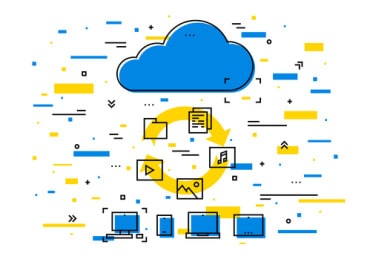
Enterprise leveraging of real-time data will increase dramatically in 2018, but it still faces adoption challenges. What are these obstacles?
Enterprise usage of real-time data is increasing dramatically in 2018, but it still faces numerous barriers to widespread integration. Firstly, many companies have to upgrade their IT infrastructure and internal processes to accommodate real-time data processing — and this costs money. Others fail to see any benefit from transitioning to an enhanced data flow.
In either case, it’s clear that modern society isn’t quite ready for large-scale implementation of real-time data processing — but it’s not far off. To help curb any negative connotations, tech-savvy companies are starting to apply real-time data in creative and innovative, sometimes challenging ways.
1. Data Collection
The first step in the entire process is the initial and critical act of collecting relevant data. Errors made during this time will affect the integrity of any analyses or projects that depend on accurate data, so it’s crucial that the data originates from dependable and reputable sources.
It’s also critical to use a network framework that supports real-time data collection. While Hadoop is a highly popular big data file system, it doesn’t support streaming data. As a result, many enterprises are embracing Apache solutions, including:
- Storm
- Flink
- Samza
- Spark Streaming
- Kafka
Not only are these platforms ideal for collecting and processing general datasets, but they’re also specifically built to accommodate real-time applications and analytics.
2. Data Analytics
Spotify, the popular music streaming service, has developed a successful business model around saving user playlists and automatically selecting which song to play next. It’s a format that works well — as long as the listener is okay with playing the same, pre-streamed tracks from one day to the next.
See also: IBM unfurls data analytics platform based on microservices
But most music enthusiasts enjoy a variety of music. They grow tired of listening to the same tunes every single day and often appreciate suggestions — based on their current tastes — to broaden their musical horizons.
To provide customized recommendations and avoid becoming stale, Spotify recently began using deep-level and contextual data analysis. Instead of simply looking at a user’s listening history, the new system factors in details such as the time of day, what the user was doing at the time and even what other, similar users enjoy. The solution is the perfect example of how real-time data analytics can strengthen customer satisfaction.
3. Data Reporting
Real-time data lends itself well to most modern reporting protocols — as long as the analysts know how to use the information properly. Most figureheads — from nearly every industry imaginable — agree on the many benefits of real-time data reporting, but there are some inherent obstacles in this phase too. Serious concerns over data quality and the reluctance of staff members are slowing the development of real-time analytics. Two important factors are:
- Data integrity: As mentioned earlier, data integrity ultimately depends on the quality of the initial stream. Unfortunately, many problems don’t manifest until the final reporting phase. To minimize any potential reporting issues, companies are promoting data accountability across all ranks and roles in their staff. There isn’t one person to ensure and verify accuracy — it’s up to the entire team.
- Employee mindset: Some employees, including senior-level and managerial leaders, just don’t see the benefits of real-time analytics. To change their minds, company owners and IT officials need to begin at the highest ranks. Convincing upper management of these advantages is critical to gaining acceptance throughout the entire workforce.
Strategies like these make it much easier to integrate real-time data analytics into a reluctant or stubborn workforce. These tricks also maximize the impact of big data collecting and processing in general.
4. Data Management
Managing all of this new data is another challenge with big data, and it’s only compounded in real-time applications. The IT team with Twitter is very familiar with the long-term storage and management of real-time data. After all, they deal with billions of logins stemming from hundreds of millions of different devices every day.
To make sense of all their data and to manage it effectively, the team constructed an entire culture around data. Apart from developing a new platform — named Heron — to provide real-time processing functionality, the initiative also removed many fraudulent accounts and SPAM from their servers.
Not only does Twitter now provide a friendlier, faster network for its users, but it also makes it easier for their tech team to identify, track and resolve future issues. It’s a win-win scenario.
The Benefits (and Conflicts) of Modern Technology
Real-time data processing has much to offer the modern business model. There are also plenty of interesting and unique ways to apply real-time data for the benefit of customers and internal staff alike. While some significant challenges remain, they’re quickly being dismantled — or, in some cases, circumnavigated — by breakthroughs in other areas of modern technology.




























